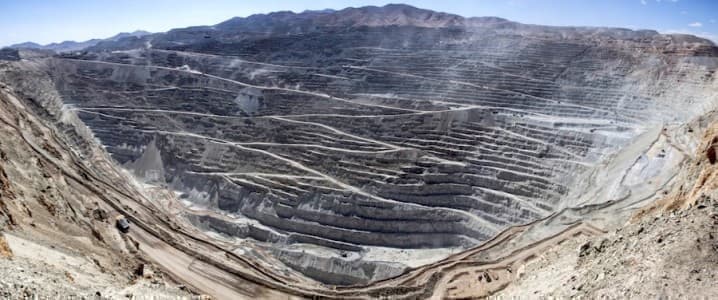The iron ore slump shows that the Chinese economy continues to struggle. Moreover, if things on the steel front do not improve quickly, demand will be low for the rest of the year. Indeed, the decline in iron ore prices, which recently hit a five-month low, has many analysts worried about the robustness of China’s economic rebound.
According to data released recently by the China Iron and Steel Association (CISA), steel inventories at major Chinese steel mills fell to 18.1 metric tons (MT) in late April. This represents a decline of 2.3% compared to mid-April. Meanwhile, an analyst report released by ING said China’s steel consumption had fallen short of expectations during a peak construction season. This sent a wave of concern throughout the industry. Typically, March and April are the most productive months for China’s steel market. However, in addition to the drop in steel inventories, crude steel production at major mills also declined by 3.6% during the same period, reaching 2.21 MT per day in late April. China Baowu Steel, the country’s top steel producer, dropped its factory-gate prices alongside at least two other mills. Meanwhile, local authorities officially directed mills in the Fengnan district of Tangshan City to curb crude steel output. These represent China’s first batch of steel mills to observe another year-on-year administrative reduction in output after repeated cuts in 2021 and 2022. According to a World Steel Association report, China’s steel production dropped 2% last year to 1.0 billion tons. Much of it was due to government-mandated production cuts.
Many Factors Affecting Iron Ore Prices
According to the Financial Times, last week, the cost of iron transportation to the northern Chinese harbor of Qingdao plummeted to $102.7. This represents a staggering 23% decline from its peak in March. That said, prices partially recovered to $107.9 as of Monday’s market closure. As the world’s largest user of iron ore, China’s pricing benchmark holds significant weight in the global market. Consequently, shifting iron ore prices also affect Western mining firms’ revenue. This includes such firms as BHP, Rio Tinto, and Vale, which count iron ore as a significant source of profits.
Related: Iraq Awaits Turkey’s Go-Ahead To Resume Kurdistan Oil Exports
According to the China Iron and Steel Association, first-quarter steel production at Chinese mills was 6.1% higher than last year. Though production outputs reached 262 million tons, customer orders have not kept pace. There was, however, a silver lining when markets opened this week. According to this report, improved downstream demand and expectations of stimulus policies in China led to a rise in iron ore futures in Dalian and Singapore on Monday. The Dalian Commodity Exchange’s most-traded September iron ore increased by 2.01% to 710 yuan ($102.72) per ton. Meanwhile, the benchmark June iron ore on the Singapore Exchange rose 1.01% to $100.45 per ton. Still, despite the rise, some analysts say there was no significant improvement in iron ore fundamentals.
Crude Steel Output Up, but Doubts Remain
Additional support came from increased crude steel output following production resumption at some mills. Indeed, estimates put China’s daily crude steel output for the first ten days of May at 2.91 million tons. This represents a rise of 1.18% from the previous ten-day level. Additionally, coking coal gained 1.38%, and coke climbed 1.71%. Meanwhile, rebar on the Shanghai Futures Exchange rose by 1.03% to 3,632 yuan per ton, while hot-rolled coil advanced 1.34%, and wire rod climbed 2.24%.
Despite expectations of fresh stimulus policies, most observers believe that the rise in iron ore futures may be short-lived if demand does not improve soon. This suggests that the Chinese economy may be in for a more dramatic slowdown.
By AGMetalminer.com
More Top Reads From Oilprice.com:
- Bank Of America Sees Oil Prices Heading Toward $90 This Year
- Oil Prices Rise Amid Expectations Of A Tightening Market
- Small Oil Moves In Where Big Oil Moves Out


















